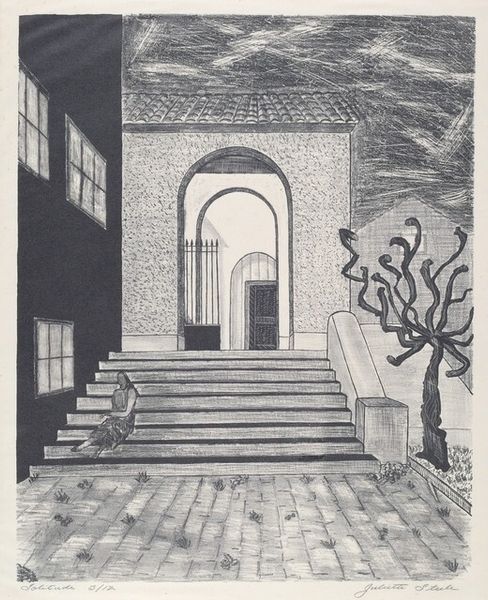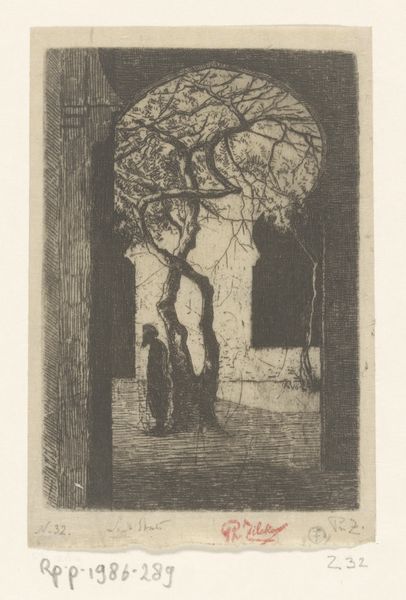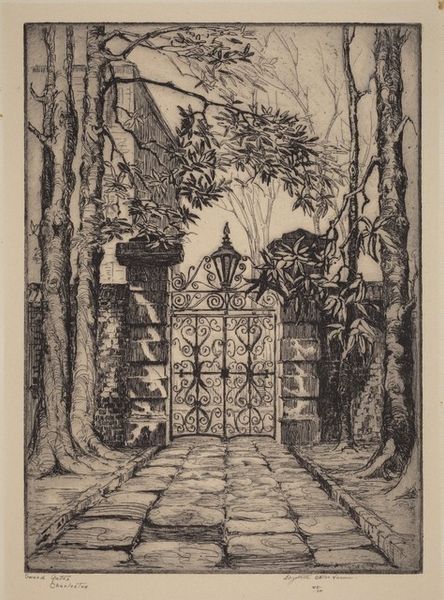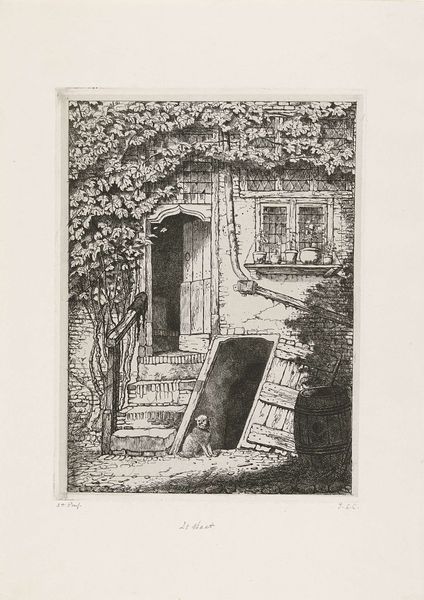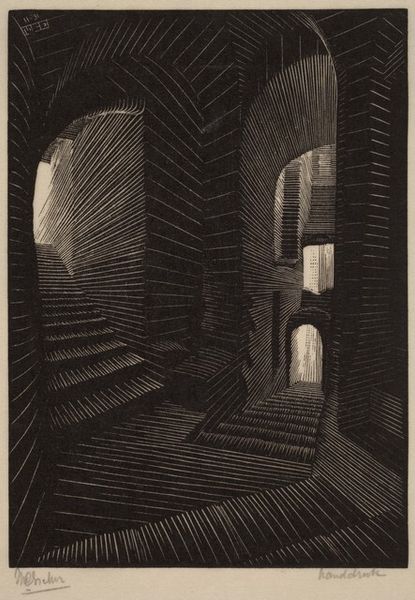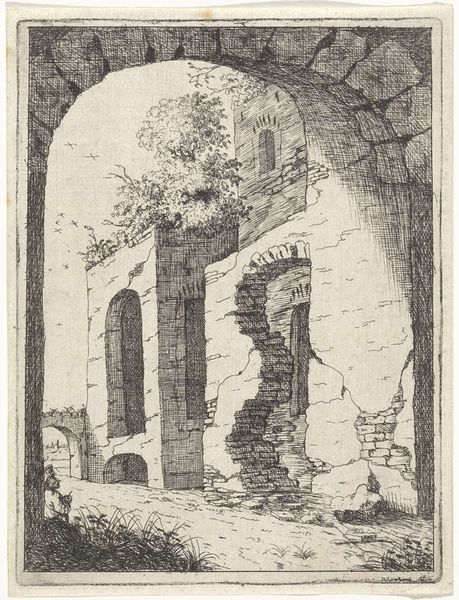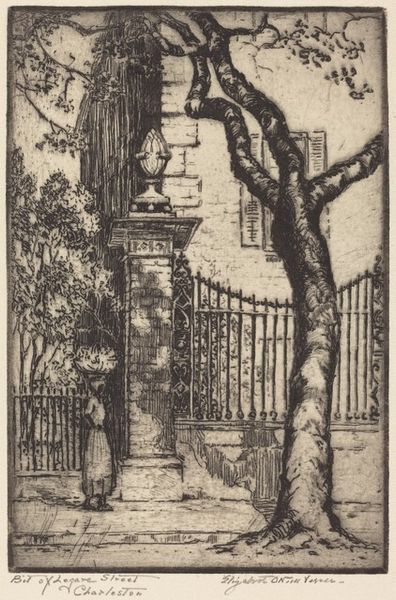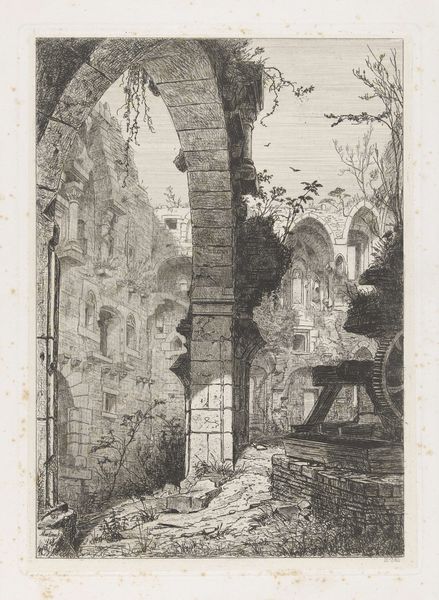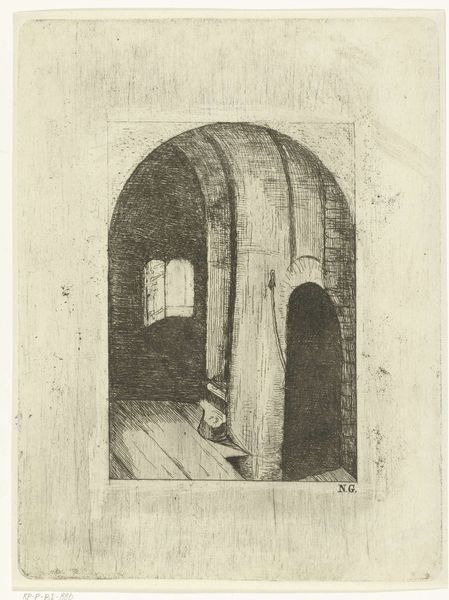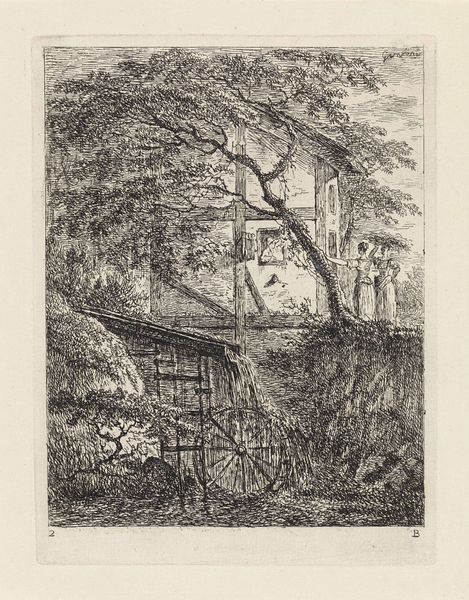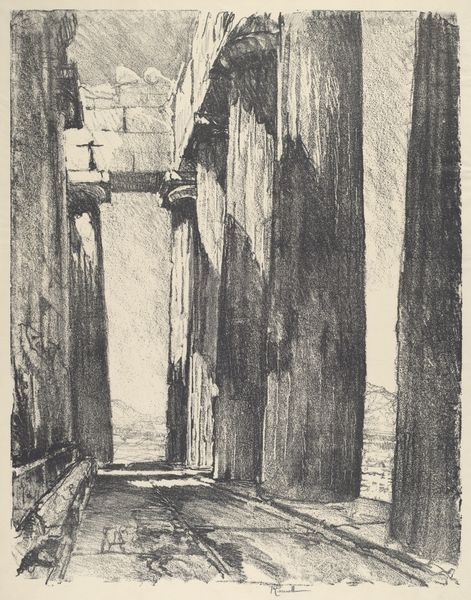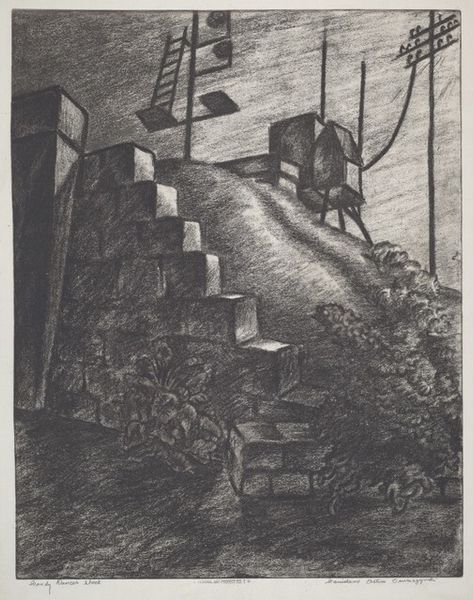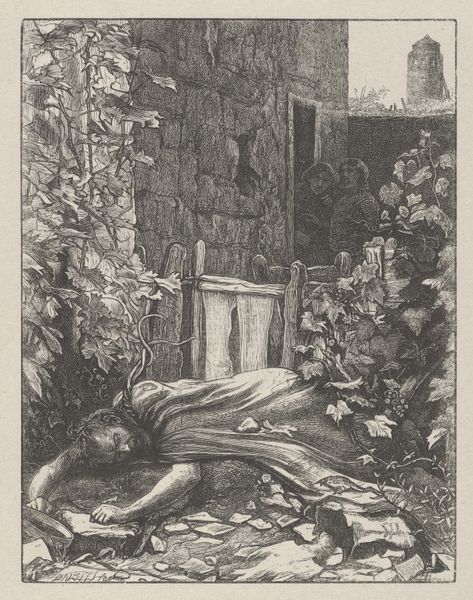
The Crooked Stoop (Old Tom's Chop House) (from Scenes of Old New York) 1870
0:00
0:00
drawing, print, etching, ink
#
drawing
# print
#
etching
#
ink
#
cityscape
#
genre-painting
#
realism
Dimensions: sheet: 8 1/16 x 4 3/8 in. (20.4 x 11.1 cm) mount: 13 9/16 x 10 3/16 in. (34.4 x 25.8 cm)
Copyright: Public Domain
Editor: Here we have Henry Farrer's "The Crooked Stoop (Old Tom's Chop House)," an etching from 1870, currently held at The Met. The first thing that strikes me is the use of light and shadow; it creates this incredibly textured surface on the brick. What formal elements stand out to you? Curator: Indeed. Note the composition's pronounced verticality, contained by the arch at the top. The sharp contrast between the precise brickwork and the amorphous shadows calls attention to the materiality of the architecture. Farrer plays with geometric structure against the softening effects of light, and how it dissolves the tangible. Observe how the lines converge, leading the viewer's eye to the darkened threshold, inviting questions about what lies beyond. Do you perceive any sense of depth? Editor: Yes, but it feels very shallow, almost theatrical, like a stage set. How does the stark contrast contribute to the overall structure of the piece? Curator: The strong chiaroscuro accentuates the geometric volumes of the steps and the rectangular sign, thus reinforcing the dichotomy between solidity and shadow. The eye jumps to different parts of the work—signage and decoration are arranged, calling to the architectural whole and establishing structural relationships in light and dark. This emphasis compels us to read it not as merely representational but as a study of form itself. Editor: That’s interesting. I was focused on the subject, but your reading encourages us to analyze Farrer's structural decisions in composing this piece. Curator: Precisely. It redirects us to the underlying visual language the artist employs to create a compelling image, less concerned with narrative than with aesthetic syntax. Editor: It gives me a completely different lens to observe art. Thanks so much for your perspective!
Comments
No comments
Be the first to comment and join the conversation on the ultimate creative platform.
